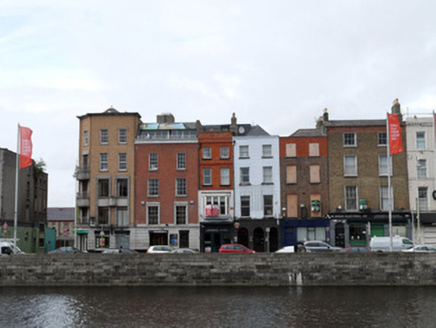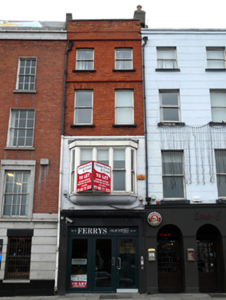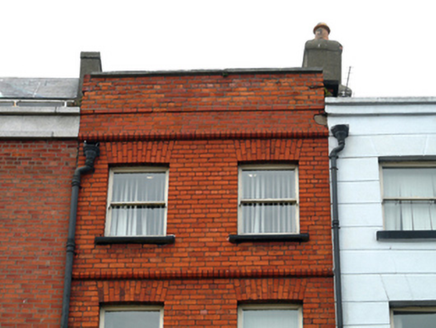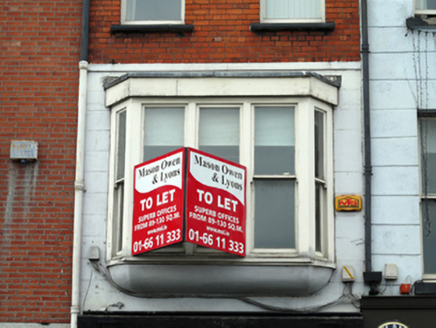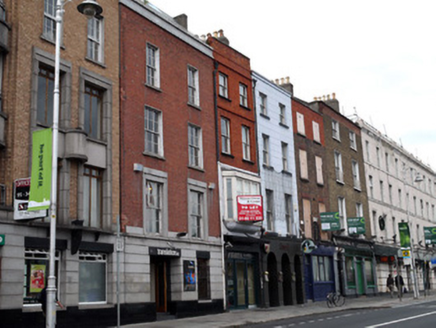Survey Data
Reg No
50070285
Rating
Regional
Categories of Special Interest
Architectural
Original Use
House
In Use As
Office
Date
1860 - 1900
Coordinates
315293, 234231
Date Recorded
20/09/2012
Date Updated
--/--/--
Description
Attached two-bay four-storey former house, built c.1880, with oriel window to first floor, recent shopfront to ground floor and recent extension to rear (north) elevation. Now in use as offices. Recent flat roof having chimneypots running parallel to brick parapet with granite coping. Rendered shared chimneystack on east party wall. Red brick walls laid in English garden wall bond to second and third floors having gauged brick stringcourses. Lined-and-ruled rendered walls to first floor over recent black granite shopfront surround to ground floor. Square-headed window openings having one-over-one pane timber sash windows to second and third floors. One-over-one pane timber sash windows flanked by timber mullions to first floor oriel window. Recent timber framed door and windows to shopfront. Metal cellar hatch to footpath. Access to rear from Hamilton Court.
Appraisal
A well proportioned terraced building that, while more recent than its neighbours to the east, forms part of a coherent elevation to the River Liffey with its neighbouring buildings due to its similar scale and proportions. The large window panes and gauged brick are typical of the Victorian era, and became possible following the industrialisation of the manufacturing processes involved. Its first floor oriel window adds interest to the terrace. Ormond Quay was developed by Sir Humphrey Jervis in the late seventeenth and early eighteenth century and is named after the Duke of Ormond who is credited with proposing that Dublin's riverside buildings should face the Liffey with a stone quay to the river's edge and a carriageway between. This proposal made a significant contribution to the development of Dublin's quays.
